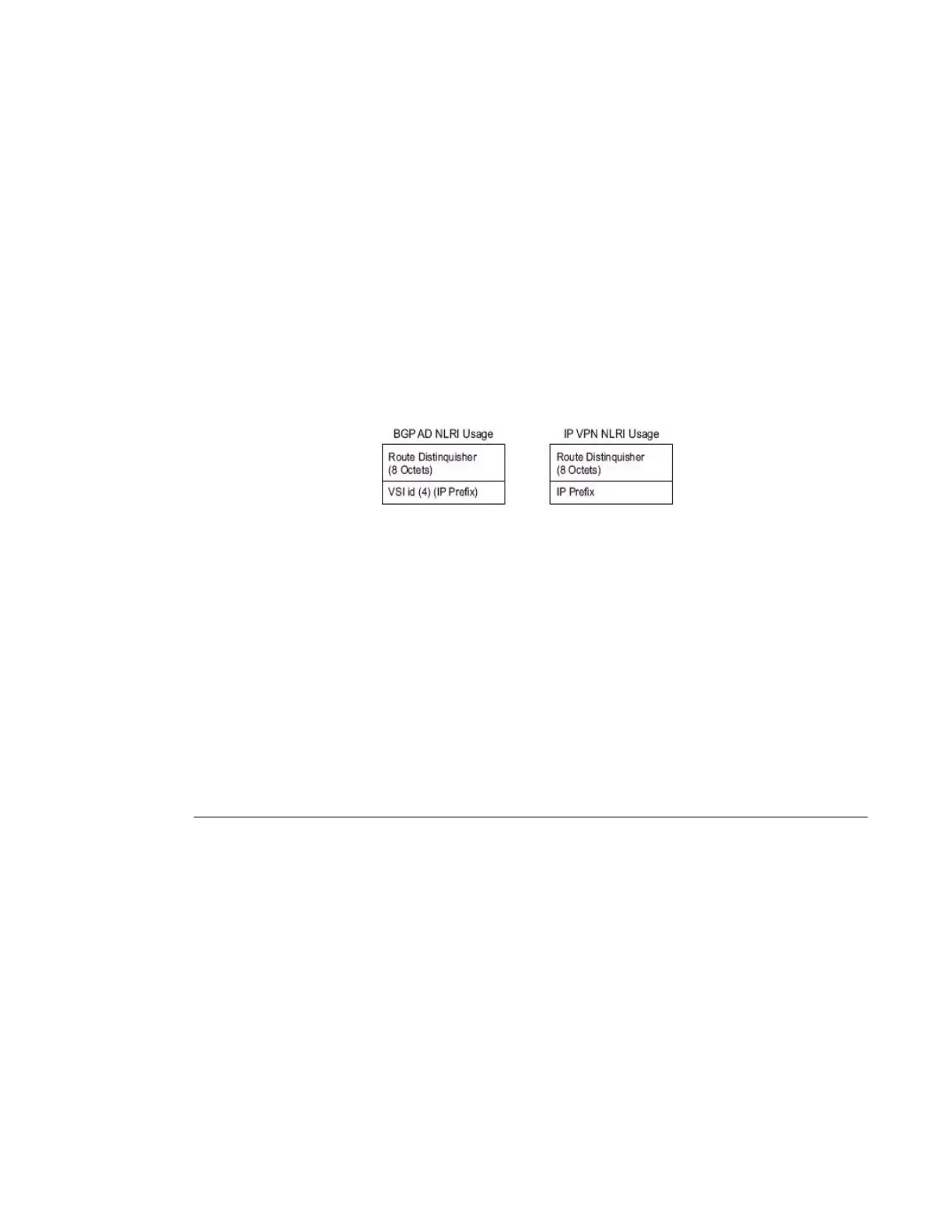Virtual Private LAN Services
7210 SAS M Services Guide Page 287
• VSI-ID— The unique identifier for each individual VSI, built by concatenating a route
distinguisher (RD) with a 4 bytes identifier (usually the system IP of the VPLS PE);
encoded and carried in the corresponding BGP NLRI.
In order to advertise this information, BGP AD employs a simplified version of the BGP VPLS
NLRI where just the RD and the next 4 bytes are used to identify the VPLS instance. There is no
need for Label Block and Label Size fields as T-LDP will take care of signaling the service labels
later on.
The format of the BGP AD NLRI is very similar with the one used for IP VPN as depicted in
Figure 47. The system IP may be used for the last 4 bytes of the VSI ID further simplifying the
addressing and the provisioning process.
Figure 47: BGP AD NLRI versus IP VPN NLRI
Network Layer Reachability Information (NLRI) is exchanged between BGP peers indicating how
to reach prefixes. The NLRI is used in the Layer 2 VPN case to tell PE peers how to reach the VSI
rather than specific prefixes. The advertisement includes the BGP next hop and a route target
(RT). The BGP next hop indicates the VSI location and is used in the next step to determine which
signaling session is used for pseudowire signaling. The RT, also coded as an extended community,
can be used to build a VPLS full mesh or a HVPLS hierarchy through the use of BGP import or
export policies.
BGP is only used to discover VPN endpoints and the corresponding far end PEs. It is not used to
signal the pseudowire labels. This task remains the responsibility of targeted-LDP (T-LDP).
FEC Element for T-LDP Signaling
Two LDP FEC elements are defined in RFC 4447, PW Setup & Maintenance Using LDP. The
original pseudowire-ID FEC element 128 (0x80) employs a 32-bit field to identify the virtual
circuit ID and it was used extensively in the initial VPWS and VPLS deployments. The simple
format is easy to understand but it does not provide the required information model for BGP
autodiscovery function. In order to support BGP AD and other new applications a new Layer 2
FEC element, the generalized FEC (0x81) is required.

